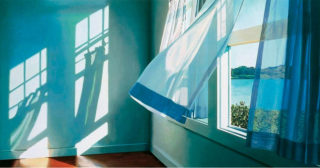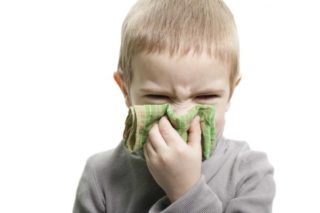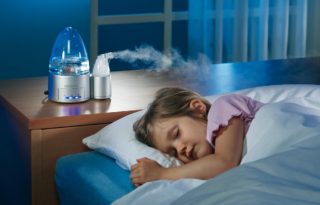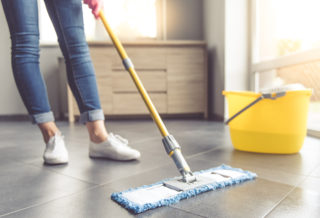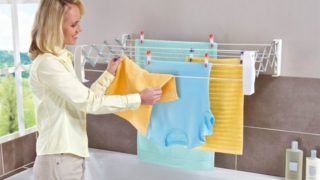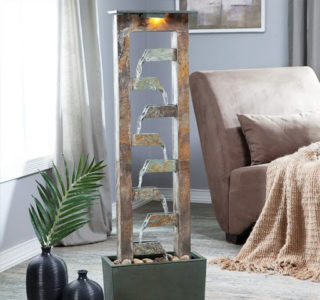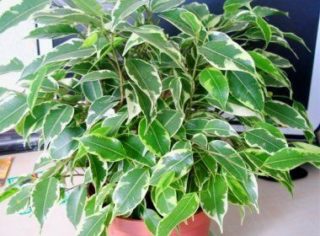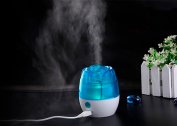With the advent of cold weather, the issue of creating a favorable microclimate in residential premises is an acute question. Proven methods that will not require additional costs will help humidify the air in the room without buying a humidifier. The implementation of some recommendations is combined with household work.
Climate standards
Currently, in Russia, the main regulatory document governing the design, construction and maintenance of premises is the joint venture (Code of Rules) 60.13330.2016. It is called: “Heating, ventilation and air conditioning”. The text provides definitions of optimal and acceptable air quality for residential and industrial buildings.
With optimal parameters, a person is comfortable in the room, there are no health hazards.
Acceptable characteristics determine the qualities at which a person will remain healthy, but the sensations of being in an apartment or a private house will not be pleasant.
Quantitative values are indicated in GOST 30494-2011. “Residential and public buildings. Indoor microclimate parameters. ”
To critical parameters of clause 4.2. GOST include:
- temperature
- air velocity;
- relative humidity.
The table shows the exact characteristics for different purpose rooms.
| Purpose of the room | Temperature, ºС | Relative humidity% | ||
| Optimal | Permissible | Optimal | Permissible | |
| Living room | 20 – 22 | 20 – 24 | 45 – 30 | 60 |
| Kitchen, toilet | 19 – 21 | 18 – 26 | No norm | No norm |
| Study and relaxation rooms | 20 – 22 | 20 – 24 | 45 – 30 | 60 |
The humidity indicator for pantries, bathrooms, and vestibules is not standardized. Characteristics are applicable only for rooms with a long (more than 2 hours) continuous stay of people.
In summer, the microclimate is standardized only for living rooms:
- optimal temperature - 22 - 25 ºС;
- permissible - 20 - 28 ºС;
- optimal relative humidity - 60 - 30%;
- permissible - 65%.
If temperature affects a person’s well-being and a sense of comfort, deviation of moisture content in the air entails health consequences.
Why is the air in the apartment dry
In the warm season, you don’t have to worry about humidity in the house, an increased amount of water in the air leads to discomfort.
In winter, the indicator drops sharply and usually in urban apartments does not exceed 20 - 25%, which is lower than the required by GOST indicators.
Often called hot batteries. In fact this is not true. The table shows how much water vapor is in the air at different temperatures at different humidity.
All apartment buildings are equipped with ventilation systems, which provides multiple changes of air in the room - dirty is removed through the ventilation system, a new one arrives from the street during ventilation, through window air inlets, gaps in doors and window frames.
For example, at a room temperature of 20 ºС in the air, according to the standards, there should be an average of 5 to 8 gr. water.
Normal winter rates, for example, at minus 15 degrees - 80% humidity. Therefore, the air contains only 1.1 g. moisture.
Street air entering the room for ventilation and mixing with room air drastically reduces the humidity indicator. The process takes place continuously throughout all the cold months.
Dried air
In most regions of the country, in winter, when the heating in the rooms is turned on, the humidity decreases - the indicator is in the range of 18 - 25%. With prolonged daily exposure to such conditions, many human biological systems suffer.
Overall well-being
Doctors note that when humidity is below normal, fatigue quickly sets in, muscle tone decreases, immunity ceases to cope with pathogens.
An unacceptable microclimate is most harmful to children, elderly residents of apartments and people with respiratory diseases.
Eyes
In a normal state, the surface of the eyes is covered with a thin layer of tears, which washes away particles of dust and pathogens.
In a dry room, the tears dry quickly - the protection decreases, which leads to irritation of the cornea, the syndrome of "dry eye" is manifested.
Respiratory system
The mucous membranes of the respiratory tract and bronchi must always be in a wet state for self-cleaning. This prevents infections from entering the body.
The winter air of the premises dries the surface of the nasopharynx and bronchi, which reduces the body's security. Dry mucous membranes can lead to nosebleeds.
Skin and hair
Low humidity in the room adversely affects skin health. The greatest harm occurs to exposed parts of the body: the face and hands. Microcracks appear on the surface, which opens the way for infections. Inflammation and irritation appear.
A lack of moisture negatively affects the hair, making it brittle and dull. It is in winter that many people worsen the problem of dandruff.
Newborn's room
Particular attention is required in the room of the newborn.
The mechanisms of thermoregulation and adaptation to the microclimate in a child are not yet set up for proper operation. The obligation to adapt to environmental conditions lies with the baby's parents.
The microclimate parameters in the room with the newborn must be maintained during the day - there should be no sudden jumps.
To accurately measure temperature and humidity, you need to purchase hygrometer thermometers. The price of a digital device does not exceed 80-100 rubles.
Humidification Methods
The easiest and fastest way to increase the humidity in the apartment is to buy specialized appliances.
Given the price of humidifiers, the size of pensions and wages, this method is not always possible. In addition, it is necessary to purchase a fixture for each room, which will require additional costs.
Humidifiers are needed in severe cases when the "free" methods to achieve the effect is not obtained. In most apartments, indicators can be improved independently. For this, simple improvised methods are suitable.
At 100% humidity, for the temperature range from 10 to 30 ºС, the air contains as much water as the room temperature. For example, at 15 ºС the maximum amount of water will be 12.8 g / m3.
To ensure 40% humidity, it is enough to spray 5 g additionally. water per cubic meter of space. It is a little and solved without special devices.
Ventilation
Often on the Internet it is advised to increase the air humidity by airing. In winter, this method does not work.
At negative temperatures, even at a humidity of 100%, the water in the street air is much less than in room conditions. Thus, letting frosty air into the apartment, the situation can only be worsened.
Cleaning
Regular wet cleaning is the easiest and most effective way to improve the microclimate. In addition, the method "works" automatically.
For an average room of 18 m2 with a ceiling height of 2.5 m, the volume will be 45 m3. At a temperature of 20 degrees for a favorable humidity of 40% you need 280 g. water.Given that in winter conditions the water content is approximately equal to 20%, the evaporation is 140 g. the liquid used for cleaning will create the desired microclimate parameter for several hours.
Drying Laundry
Another way to increase humidity is to dry the washed items near a radiator or heater. The surface temperature of the heater should be taken into account - the fabric may burn and stick to the surface.
It is forbidden to cover things with electric heaters. An increase in temperature under the “blanket” leads to frequent cycles of switching the device off and on or may cause a fire.
Water Tanks
Another simple way is to place containers filled with water in each room. Choose plates, saucers, other objects with a large area of evaporation. Water is added as it evaporates, about two to three times a week.
In household goods stores, you can purchase special containers designed to be installed or suspended on central heating batteries.
To improve the effect, a “wick” of soft tissue is immersed in water.
Spray guns
Spray guns make it easy to get comfortable living conditions.
Humidification is combined with spraying of indoor plants.
For effective evaporation, several jets can be directed to the radiator.
Aquarium
Installation in an aquarium room can partially or completely solve the problem of increasing air humidity to the required values.
According to laboratory studies, at room temperature, up to 20 g of water per hour, or about 500 g per day, evaporates from an open surface of water. The mirror area of domestic aquariums is about 0.3 m2, this is enough to increase the humidity in a medium-sized room.
The increased aeration is promoted by the included aerator and aquarium water heater.
Decorative fountain
An decorative fountain can become an element that adorns the interior and moisturizes the air.
When choosing, it is important to consider that moisture evaporates in open type devices - water must come in contact with air.
Houseplants
The right choice of plants will allow you to regulate the microclimate. Some plants moisturize the air, another - dries.
Plants that can reduce indoor humidity:
- spathiphyllum;
- a coffee tree;
- myrtle;
- laurel noble;
- lemon.
It is better to place these representatives of the flora in moist rooms, for example, in the kitchen. In the bedrooms, the listed plants will dry the air to unacceptable values.
For moisturizing purposes, you should choose flowers that need constant abundant watering. Water will evaporate from the pot and pan, as well as from the surface of the leaves.
Humidity can increase in a room:
- Cyperus
- cypress;
- sansevieria;
- ficus;
- cissus;
- Kalanchoe;
- calla lilies or callas resembling them;
- eichornia;
- reed drooping;
- pontederia;
- calamus cereal.
Regular spraying and wiping leaves with a damp cloth will increase air humidity.
Household appliances with humidification function
Some climatic appliances for the home, in addition to their main function, can replace a humidifier.
Humidification in the apartment contributes to a fan with a spray of water. In the summer, the device is turned on for a long time, moisture in the air will cool the room. In winter, just turn on the fan for 10 - 15 minutes to achieve the desired result.
At temperatures up to -5ºC, it is possible to use a split system with a humidification function to heat the air in the apartment.
Some types of fireplaces use water vapor illuminated by a red lamp to create a 3D flame effect. Models with an open firebox easily cope with humidification.

